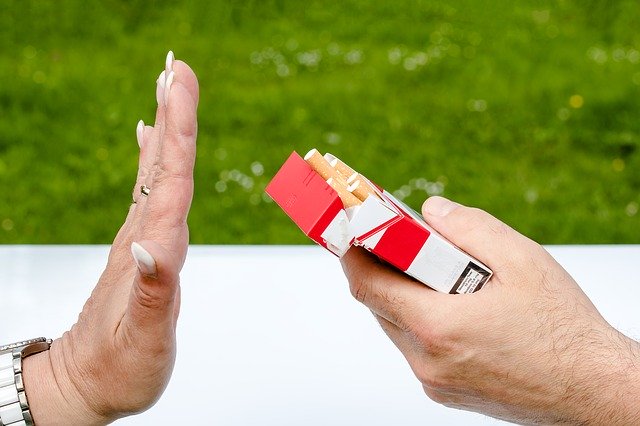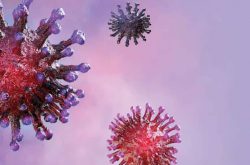Varenicline (trade name Chantix and Champix) is a prescription medication used to treat nicotine addiction. It reduces both craving for and decreases the pleasurable effects of cigarettes and other tobacco products.
It is a high-affinity partial agonist for the α4β2 nicotinic acetylcholine receptor subtype (nACh) that leads to the release of dopamine in the nucleus accumbens when activated, and therefore, has the capacity to reduce the feelings of craving and withdrawal caused by smoking cessation.[1] In this respect it is similar to cytisine and different from the nicotinic antagonist bupropion and nicotine replacement therapies (NRTs) like nicotine patches and nicotine gum.
Varenicline to Stop Smoking: Uses, Side Effects, Interactions
Varenicline helps you stop smoking. To increase your chance of success, use this medication with a stop-smoking program that includes education, support, and counseling. Quitting smoking lowers your risk of heart and lung disease, as well as cancer. Varenicline works by blocking nicotine’s effects in the brain that make you want to smoke.
Discuss the risks and benefits of this medication, as well as other ways to quit smoking (such as nicotine replacement treatment), with your doctor.
Varenicline is not recommended for use by children 16 years or younger because it does not help this age group stop smoking.
How to use Varenicline Tablet
Read the Medication Guide provided by your pharmacist before you start taking varenicline and each time you get a refill. If you have any questions, ask your doctor or pharmacist.
There are different ways to use varenicline. One way is to set a date to quit smoking before beginning treatment with this drug. Begin taking varenicline as directed by your doctor, 1 to 2 weeks before the quit date. Take one 0.5-milligram tablet once a day for 3 days, then increase to one 0.5-milligram tablet twice a day for 4 days. The dose is slowly increased to lessen the chance of side effects (such as nausea, unusual dreams). It is okay to smoke during this time. Stop smoking on the quit date. Take the dose prescribed by your doctor twice a day for the rest of the treatment period (usually 12 weeks).
Another way to use varenicline is to start taking the drug before you choose a date to quit smoking. Start with the 0.5-milligram tablets and increase the dose as directed by your doctor. Pick a date to quit smoking that is between days 8 and 35 of treatment. Stop smoking on the date you have chosen. Take the dose prescribed by your doctor for the rest of the treatment period.
If you are not able to pick a quit date, your doctor may direct you to start taking this medication and gradually reduce smoking with a goal to quit by the end of your treatment. Follow your doctor’s directions carefully and reduce smoking as directed.
If this medication comes in a dosing package, carefully follow the directions on the dosing package. There are two types of dosing packs: a starting pack and a continuing pack, each containing different strengths of this medication. If this medication comes in a bottle, carefully follow your doctor’s directions on the prescription label. If you have any questions about how to take this medication, talk to your doctor or pharmacist.
Take this medication by mouth after eating food and with a full glass of water.
The dosage is based on your medical condition and response to treatment.
Do not increase your dose or take this medication more often than prescribed. Your condition will not improve any faster, and your risk of side effects will increase. Do not take more than 1 milligram twice a day.
Take this medication regularly to get the most benefit from it. To help you remember, take it at the same time(s) each day.
Tell your doctor if you continue to smoke after a few weeks of treatment. If you are not able to quit smoking after 12 weeks of treatment, talk to your doctor.
If you are successful and cigarette-free after 12 weeks of treatment, your doctor may recommend another 12 weeks of treatment with varenicline.
Side Effects
See also Precautions section.
Nausea, headache, vomiting, drowsiness, gas, constipation, trouble sleeping, unusual dreams, or changes in taste may occur. If any of these effects last or get worse, tell your doctor or pharmacist promptly.
Remember that your doctor has prescribed this medication because he or she has judged that the benefit to you is greater than the risk of side effects. Many people using this medication do not have serious side effects.
Tell your doctor right away if you have any serious side effects, including: burning feeling in feet/toes, unusual pain in the legs when walking.
Stop taking varenicline and get medical help right away if you have any very serious side effects, including: seizure, symptoms of a heart attack (such as chest/jaw/left arm pain, shortness of breath, unusual sweating), signs of a stroke (such as weakness on one side of the body, trouble speaking, sudden vision changes, confusion), harmful behavior to self/others/property.
Rarely, varenicline may cause serious mental/mood changes, even after stopping the medication. Drinking alcohol while taking this medication may increase the risk for mental/mood changes. Quitting smoking itself may also cause mental/mood changes. Stop taking varenicline and tell your doctor or pharmacist right away if you have symptoms such as depression/suicidal thoughts, agitation, aggression, or other unusual thoughts or behavior.
A very serious allergic reaction to this drug is rare. However, get medical help right away if you notice any symptoms of a serious allergic reaction, including: rash, itching/swelling (especially of the face/tongue/throat), severe dizziness, trouble breathing.
This is not a complete list of possible side effects. If you notice other effects not listed above, contact your doctor or pharmacist.
Precautions
Before taking varenicline, tell your doctor or pharmacist if you are allergic to it; or if you have any other allergies. This product may contain inactive ingredients, which can cause allergic reactions or other problems. Talk to your pharmacist for more details.
Before using this medication, tell your doctor or pharmacist your medical history, especially of: kidney disease, mental/mood disorders (such as schizophrenia, bipolar disorder, depression), heart/blood vessel disease (such as coronary artery disease, peripheral vascular disease, stroke), seizure.
This drug may make you dizzy, drowsy, lose consciousness, or make it difficult to concentrate. Alcohol or marijuana (cannabis) can worsen these effects. Do not drive, use machinery, or do anything that needs alertness until you can do it safely. Talk to your doctor if you are using marijuana (cannabis).
This drug may also make you more sensitive to alcohol (including increased drunkenness, unusual behavior, and limited or no memory of things that happened). Limit alcoholic beverages. Be aware of how alcohol affects you while taking this medication.
During pregnancy, this medication should be used only when clearly needed. Discuss the risks and benefits with your doctor.
It is unknown if this medication passes into breast milk. Consult your doctor before breast-feeding.
Interactions
Drug interactions may change how your medications work or increase your risk for serious side effects. This document does not contain all possible drug interactions. Keep a list of all the products you use (including prescription/nonprescription drugs and herbal products) and share it with your doctor and pharmacist. Do not start, stop, or change the dosage of any medicines without your doctor’s approval.
Smoking can affect the way your body removes certain drugs such as insulin, theophylline, warfarin, among others. When you stop smoking, your doses of these drugs may need to be adjusted by your doctor. Tell all your doctors and pharmacists that you are quitting smoking and of all the products you take.
Missed Dose
If you miss a dose, take it as soon as you remember. If it is near the time of the next dose, skip the missed dose. Take your next dose at the regular time. Do not double the dose to catch up.
Storage
Store at room temperature away from light and moisture. Do not store in the bathroom. Keep all medications away from children and pets.
Do not flush medications down the toilet or pour them into a drain unless instructed to do so. Properly discard this product when it is expired or no longer needed. Consult your pharmacist or local waste disposal company.Information last revised June 2019. Copyright(c) 2019 First Databank, Inc.

Important Facts About Nicotine
Nicotine is a colorless alkaloid chemical that is most commonly sourced from the tobacco plant, which is in the nightshade family of plants. Nicotine is also present in small amounts in tomato, potato, green pepper, eggplant, and coca plants.
Most commonly known as the addictive ingredient in tobacco products, nicotine is often mistakenly thought to be a harmless chemical otherwise.
While research is ongoing regarding nicotine and how it affects the human body, a number of facts about the hazards of nicotine are available today, some of which might surprise you.
How Nicotine Affects Body Chemistry
When inhaled, nicotine travels to the brain quickly (within 10 seconds) and attaches to receptors where the neurotransmitter acetylcholine would normally dock. This starts a chain of chemical reactions that influence numerous bodily functions.
Nicotine is a stimulant, but depending on the smoker’s mental and physical state, it can be perceived as energizing or relaxing.
Most smokers are familiar with the feeling of a racing heart and/or shallow breathing when they smoke. Adrenaline, the ‘fight or flight’ hormone is responsible for this. When nicotine reaches the brain, adrenaline is released, increasing heart rate, blood pressure, and restricting blood flow to the heart.
Adrenaline also tells the body to move excess glucose into the bloodstream. At the same time, nicotine hinders the release of insulin from the pancreas, which would remove excess sugar from the blood. The result is that smokers are often in a state of hyperglycemia, meaning they have more sugar in their blood than is normal. High blood sugar dampens hunger, and this is a contributing factor to the appetite-suppressant effects of nicotine.
Dopamine is another neurotransmitter that is activated when nicotine reaches the brain. Dopamine causes feelings of euphoria and is thought to play a significant role in addiction.
Nicotine Is Poisonous
Nicotine is extremely poisonous. While no exact figure has been established for a lethal dose, a recent study estimated a lower limit of 0.5–1 g.3 That said, tobacco products do not contain enough nicotine to cause a fatal overdose when used as directed. For example, a typically manufactured cigarette contains about 10 mg of nicotine, but most of it goes up in smoke, with approximately one milligram of nicotine being inhaled by the smoker.
Nicotine can be lethal to children in doses as small as 10 milligrams.
Plants produce nicotine to protect themselves from predators, and people use nicotine in pesticides for the same reason.
Nicotine can be absorbed through the skin, which is the delivery method with the nicotine patch. A spill of electronic cigarette nicotine solution (known as e-juice) can be hazardous for this reason.
Researchers have discovered that the nicotine in secondhand smoke can be absorbed through bare skin that is exposed to the smoke. It can also be absorbed into the skin from clothing that has been contaminated by nicotine.
Risks of Nicotine Exposure for Children and the Unborn Child
Nicotine is present in the residue left behind by cigarette smoke in a closed environment, also known as third-hand smoke. This presents a danger to small children who may ingest nicotine on toys and small hands that find their way to a child’s mouth.
Young children are also at risk of nicotine poisoning from chewing on full cigarettes/cigarette butts, or NRT products like nicotine gum or nicotine patches. Please keep these items out of the reach of children.
Nicotine may decrease the ability of sperm to fertilize eggs by as much as 75%.7 Nicotine docks with receptor sites on sperm cells and impedes their viability in men who are heavy smokers.
Nicotine causes blood vessels to constrict. In pregnant mothers, this translates to less oxygen and nutrients delivered to the fetus.
Nicotine easily crosses the placental barrier and can be detected in both fetal circulation and amniotic fluid. At this time, it is not known how much nicotine in vitro would be considered fatal for the fetus.
Nicotine accumulates in breast milk, is passed on to nursing infants, and appears to affect their sleep patterns.
How Nicotine Can Hurt Your Health
Research has uncovered a link between nicotine and vascular smooth muscle cell damage, contributing to the formation of plaques that lead to heart disease.
Nicotine slows the production of bone-producing cells called osteoblasts. This prolongs healing when bones are broken.
Nicotine inhibits apoptosis, a process that removes unwanted cells in the body (programmed cell death). Since some of the cells targeted by apoptosis are mutations that may become cancerous in the future, inhibiting this important function may contribute to life-threatening diseases.
Smoking is a known risk factor for degenerative disc disease.12 Nicotine and carbon monoxide in cigarette smoke hinder spinal disc cells from absorbing vital nutrients in blood, which in turn leads to premature dehydration and degeneration of spinal discs.
Nicotine is among the most toxic of all poisons and is highly addictive.
It is a mistake to think that using nicotine in a form that doesn’t involve cigarettes is harmless. Products like smokeless tobacco and electronic cigarettes may be considered less harmful when compared to cigarette smoking, but they carry considerable health hazards as well. And don’t forget, while nicotine addiction is actively engaged, ex-smokers are at a heightened risk for a full-fledged smoking relapse.
Don’t settle for less than you deserve. Recovery from nicotine addiction takes some work, but it is doable and so rewarding.
Life works better on every level when we free ourselves from the self-imposed prison addiction puts us into.
Sources: Wikipedia , WebMD , Verywellmind

